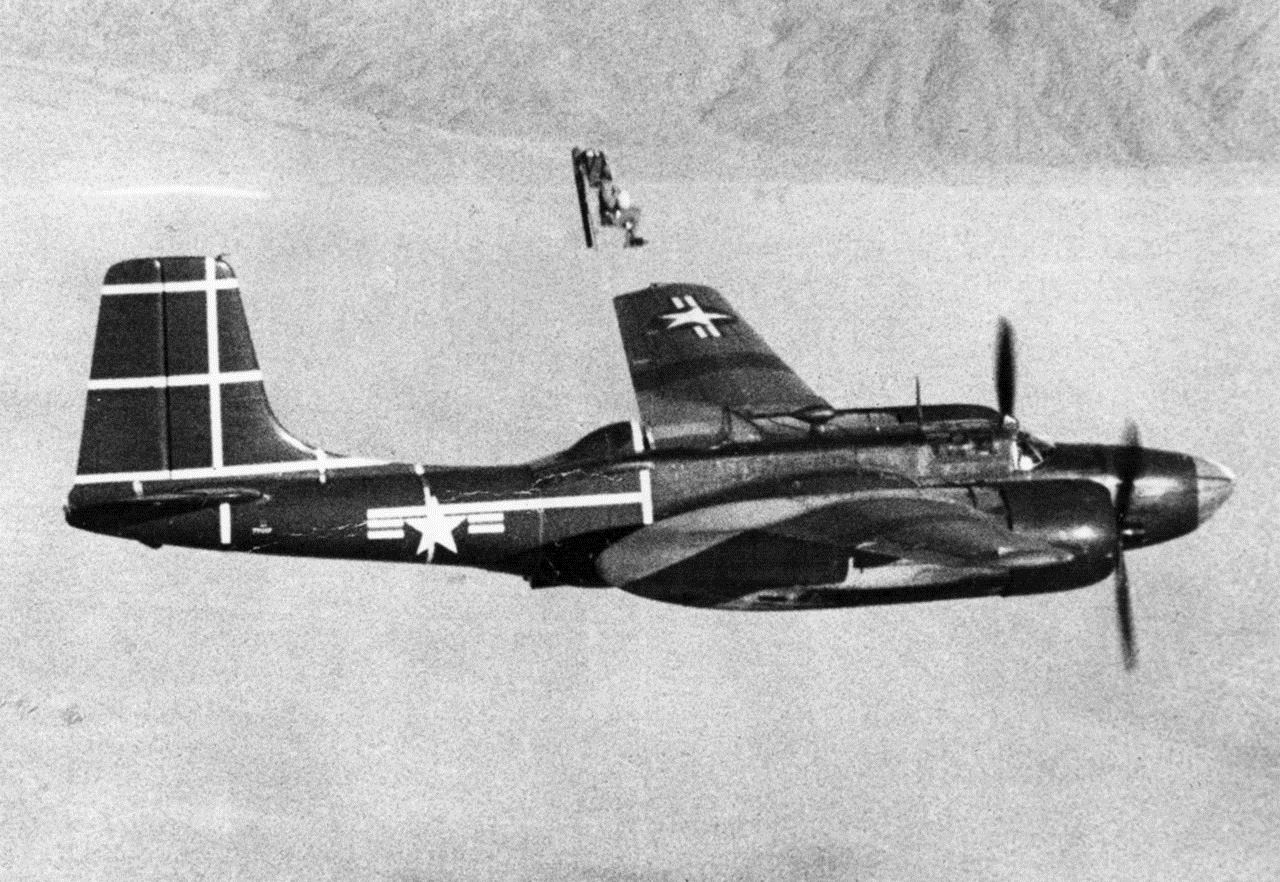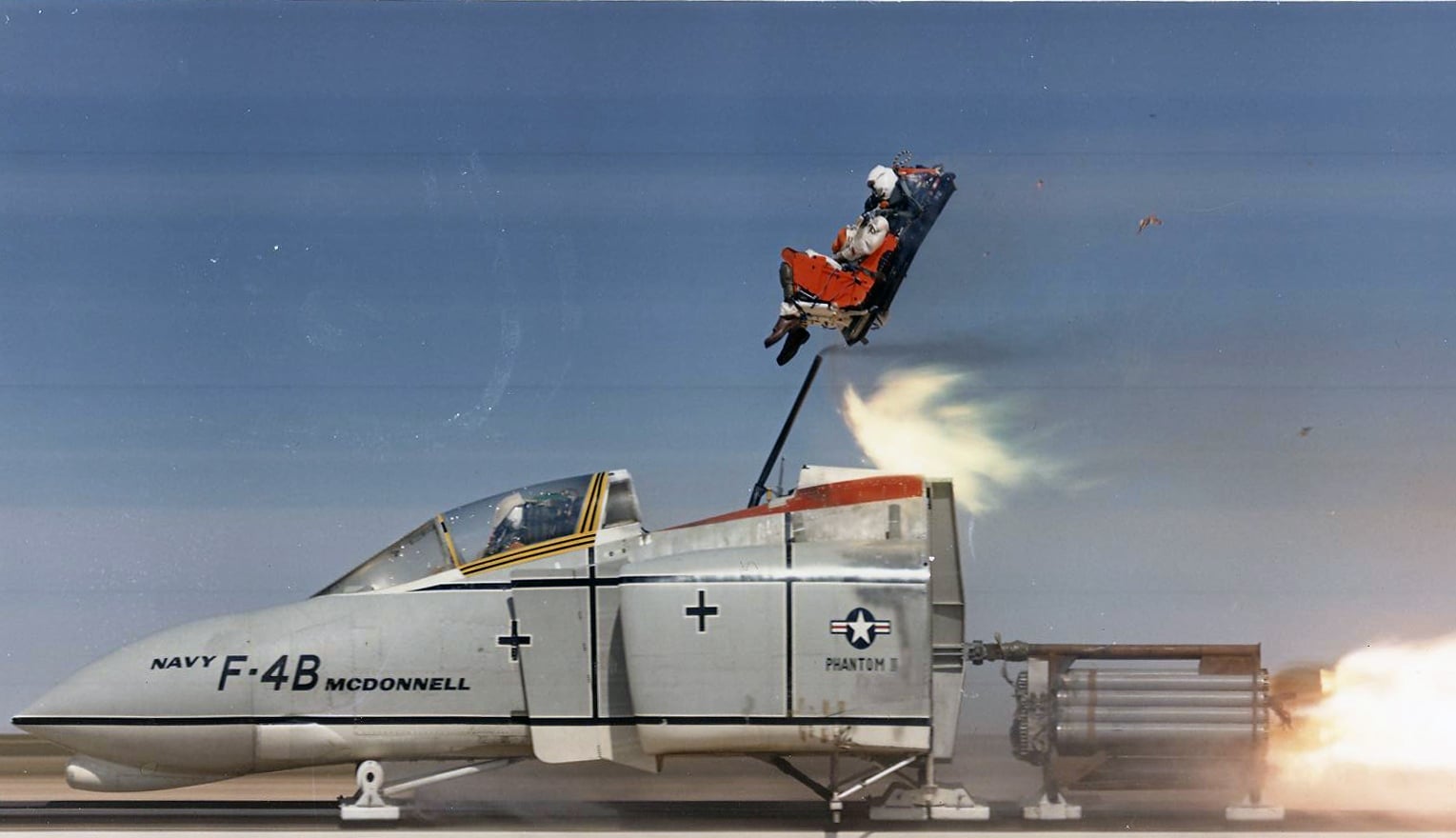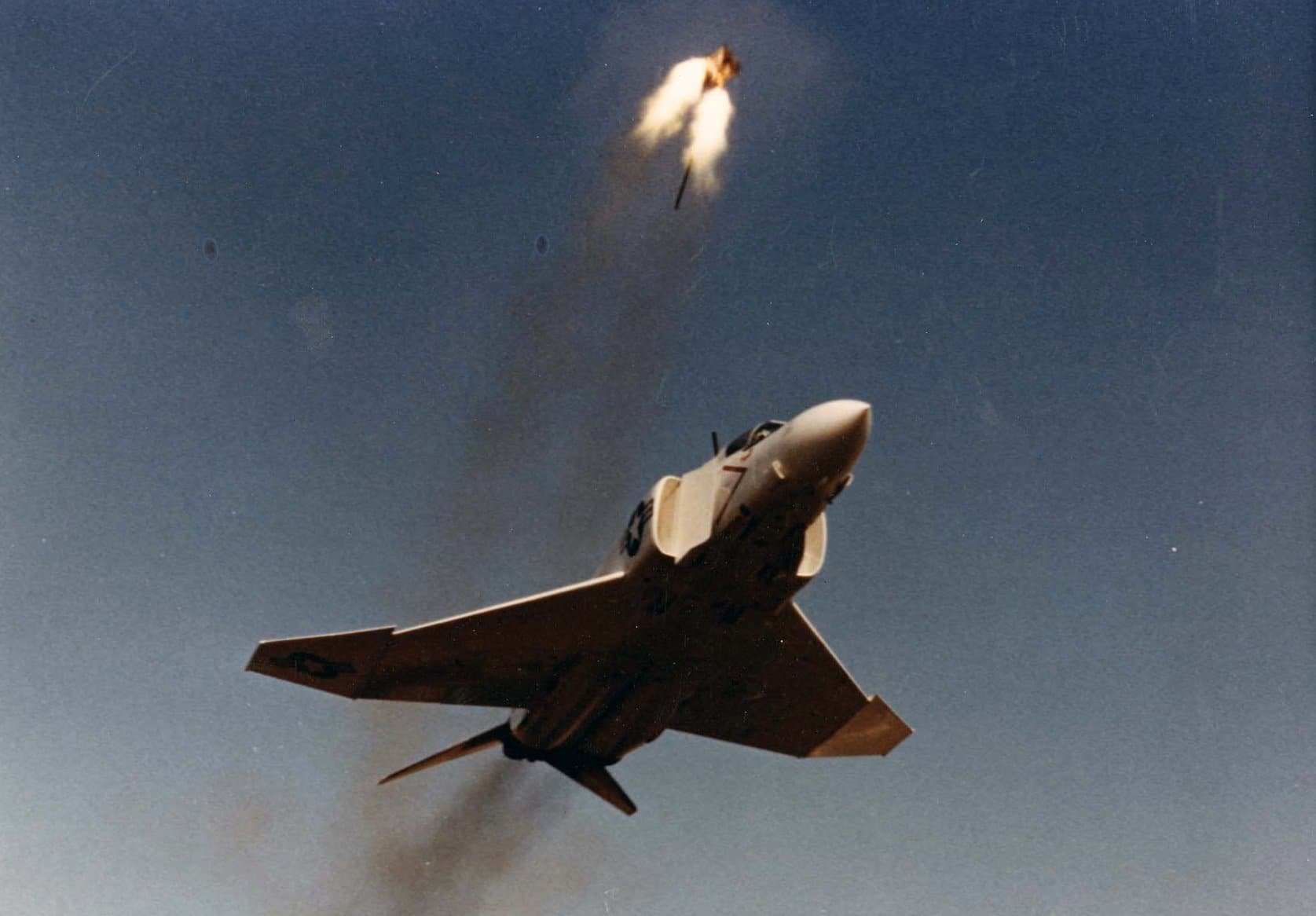When the Defense Audiovisual Agency (DAVA) and the United States Air Force (USAF) produced the film “Ejection Decision- A Second Too Late” in 1981 the services had been through a war (Vietnam) and years of operational experience with ejection seats.
The film was made as a training film for aircrews to ingrain proper decision making about ejection seat use, and the timing thereof. It’s an eye-opening piece of work that features pilots and crews who had to “punch out” and in so doing joined the Martin-Baker Ejection Tie Club when their aircraft were no longer in controlled flight. Thanks to YouTuber PeriscopeFilm for uploading it.
[youtube id=”dyjYp6WT7ww” width=”800″ height=”454″ position=”left”]

Ejection Seats Were a Game Changer
Ejection seat technology was pioneered by the Germans and the Swedes. The first operational aircraft with an ejection seat was the German Heinkel He 162A Spatz jet. Ejection seats first appeared in American aircraft when prototype jets began to appear during the mid-1940s. These initial ejection seats were manufactured by the Martin-Baker company. Convair’s F-102 Delta Dagger was the first aircraft to be equipped with a rocket-propelled ejection seat.

Since that time the rocket-propelled ejection seat has become standard equipment on the majority of jet-propelled aircraft. In the film the Fairchild-Republic A-10 Thunderbolt II, McDonnell Douglas F-4 Phantom II, General Dynamics F-111, McDonnell Douglas (Boeing) F-15 Eagle, and General Dynamics F-16 Fighting Falcon jets are all featured as aircraft from which ejection in a timely manner was the correct decision.

